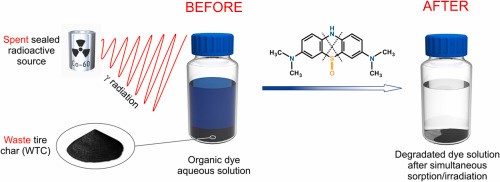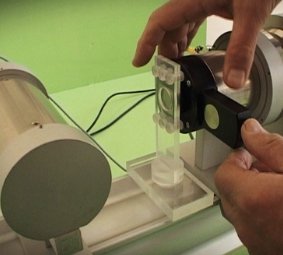Istraživača iz tri organizacione jedinice Instituta "Vinča" (Laboratorije za materijale, Laboratorije za radioizotope i Laboratorije za fiziku), kao multidisciplinarni tim predvođen dr Ljiljanom Matović, naučnim savetnikom, u saradnji sa istraživačima sa Univerziteta Tongji iz Kine, objavio je rezultate svojih istraživanja u prestižnom naučnom časopisu Journal of Hazardous Materials (IF=10.588). Odličan primer multidisciplinarnih i interdisciplinarnih naučnih pristupa u postizanju vrhunskih naučnih rezultata u Institutu od nacionalnog značaja za Republiku Srbiju.
Waste tire carbon in synergetic interaction with spent gamma radioactive source for efficient radiocatalytic degradation of organic dye
Ljiljana Matovic, Radojka Vujasin, Ksenija Kumric, Yi-nan Wu , Daniel Manaye Kabtamu, Marija Mirkovic, Djordje Petrovic
ABSTRACT: Enhanced degradation of organic dye was achieved using two different kinds of waste materials: waste tire granules and spent sealed radioactive sources. Waste tire granules were used as raw material for the production of waste tire char (WTC), which was further utilized as an adsorbent matrix for synergetic adsorption/irradiation degradation of organic dye. The spent radioactive sources were radiographic sealed sources that originate from the industry which generate the high energy radiation. Methylene Blue (MB) was used as an organic model compound. Synthesized WTC has turbostratic structure, irregular shaped particles and developed mesoporous surface. Complete degradation of 0.02 dm3 of 100 mg dm−3 MB solution, having WTC dose of 1.25 g dm−3, was achieved with delivered doze of only 60 Gy. The applied doses were 100 times smaller than those presented in the literature. Degradation pathway was determined: OH radicals that originate from radiolysis of water and from the surface of WTC played the crucial role in the radiocatalytic degradation of MB. Breakage of the aromatic ring of MB appeared by the scission of the double C‒S+˭C bond as a result of the attack of OH species on adsorbed and electronically reorganized MB molecule.
Grafički abstrakt:








